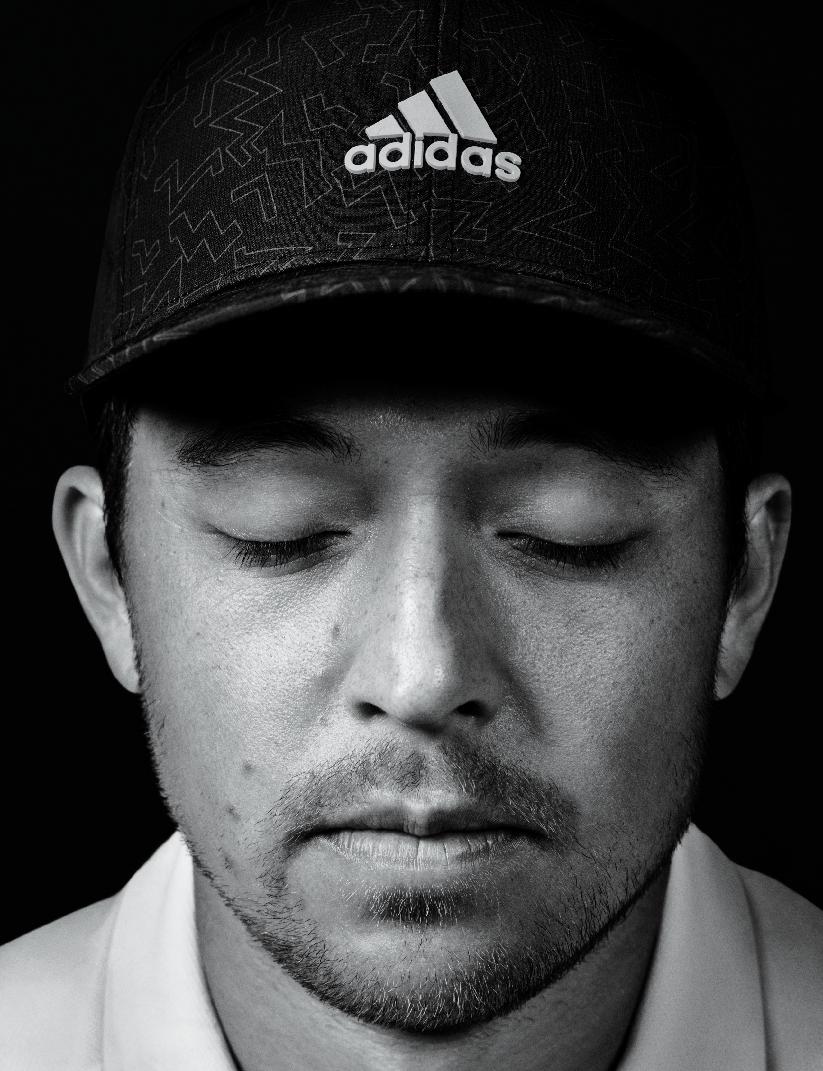
11 minute read
Xander on Zen
XAN
DER ▶ KEEP YOUR COMPOSURE ON
ZEN IN THE CRITICAL MOMENTS
F PRACTICE AND PREPARATION were all it took to prevent nerves on the course, tour players would never get rattled. We hit a ton of practice shots and spend hours and hours preparing, and we have teachers and trainers and mental-game coaches sharing all kinds of sophisticated improvement techniques.
But even with all that, I can tell you that nervousness and excitement are still there. Those feelings are a big reason I love to compete— to test myself on the very highest level.
How do you do well on those tests—whether they’re Sundays at major championships or a weekend match that’s really important? You don’t have to be a superhero and pull off shots you’ve never hit before. Your goal should be to put yourself in position to play as close to your regular game as possible. That’s what I did in the fi nal round of the 2018 Open Championship at Carnoustie, when I was in the fi nal pairing with Jordan Spieth. I made some nervous mistakes early in that round, but I got more and more comfortable, made some birdies and was tied for the lead with Francesco Molinari late. I ended up making a bogey on 17 and tying for second (Molinari won). That might seem like a failure, but for me, it was an awesome learning experience, and proof that I had it in me to play my regular game in a very tense moment.
Still, it’s been a process. I learned from a young age that my tendency was to really choke the grip during a big moment. I’d tense up in my hands, which would then tighten my forearms, and I’d try to rip one as hard as I could. But when your arms are tense, your swing doesn’t perform the same as normal. It’s like when you’re playing in bad weather, and your hands are a little wet or your grips are a touch slippery. You’ll squeeze the handle too hard, and the clubhead won’t release. You’ll block it right of the fairway on one drive and then try to twist the club shut more and wind up hitting a big hook left of the fairway on the next one. Now
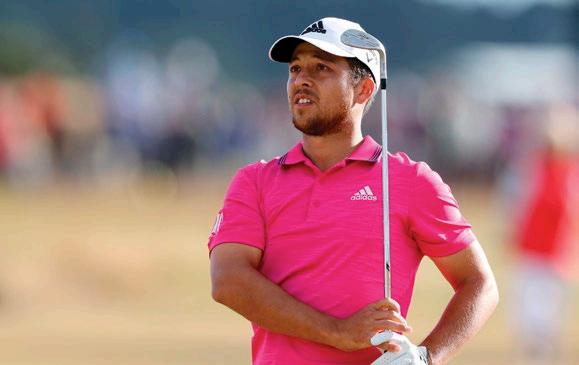
you’re on the next tee in a panic because you aren’t sure which direction the next drive is heading. You start to swing defensively, trying to steer the ball instead of winding up and letting it go.
That’s why grip pressure is something I check before every shot now —full swings and short game. I pay specifi c attention to how the club feels in my hands, and I’m always trying to match it to what I would feel if I were hitting a practice shot on a Tuesday. Just the ritual of feeling the grip in my fi ngers and making loose swings is relaxing. It reminds me to keep my jaw loose instead of tight and clenched, and my shoulders and neck fl uid and fl exible.
▶ under pressure Schauff ele fell just short of winning the 2018 Open Championship, but the experience taught him how to handle nerves much better.
Being more in touch and aware of what your body is doing is a diff erent strategy than what you hear from some players or performance coaches, who describe “going blank” as the goal under pressure. I want to be aware, because awareness means you can be more in control instead of just getting carried along. For example, I actively monitor my pulse when I play, because that’s usually the fi rst indication that you’re feeling more pressure. As tension starts to build, it translates david cannon/richard heathcote/stan badz via getty images
into a faster heart rate. Be mindful of that. A smartwatch or fi tness tracker can monitor it, or you can take your pulse by counting the beats for 15 seconds and multiplying by four. Mine is usually around 100 beats per minute when I’m playing, but it can get up into the 140s as things get amped up.
Knowing when your heart starts to race means you can take steps to deal with it. I do that with a breathing technique that slows things down. Focusing on how you breathe also gives you a process to occupy your mind, making it harder to dwell on things that would make you more nervous. Anybody can breathe better, and it’s something you can work on right now. Inhale through your nose for a full four seconds, and feel the air go down to your solar plexus. Exhale through your mouth, making sure you keep your jaw relaxed. The time element is key, because if you start to breathe too quickly, you’ll hyperventilate—which just ramps up your pulse.
Whenever I walk onto the tee, get to my ball or start the process of hitting a putt, I’m using that breathing technique to keep my heart rate under control. Just
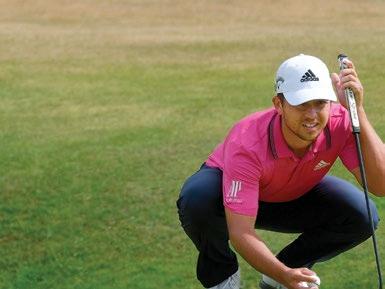
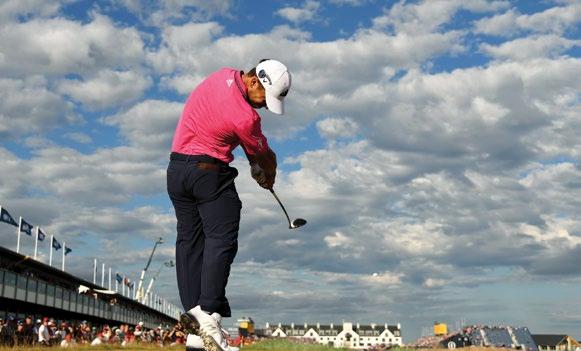
like my pre-shot routine, that routine stays the same no matter if it’s the second hole on Thursday or my approach with a one-shot lead on the 17th hole on Sunday. That’s important, because if you change from what you normally do in bigger moments, you’re just reinforcing the nervousness you might feel. All shots aren’t the same, obviously, but the closer you can get to treating them the same, the closer you’ll get to letting your shot-making, not your stress level, determine the outcome.
A few months after the 2018 Open Championship, I got into position again to win at the WGC-HSBC Champions in China. The 18th hole called for a fade—the opposite of my preferred shot shape, especially with the driver—but this tee shot didn’t bother me. Why? I had made a point to play it from that tee on Tuesday and Wednesday during practice rounds. I wanted to make sure I was comfortable with it so I could trust it when it counted. On the last hole of regulation, I hit a great tee shot, cutting it off the edge of a dangerous bunker to set up a birdie that got me into a playoff with Tony Finau. Then I had to immediately go back and hit that tee shot again in the playoff , so I went through my routine and played a little video in my mind of the fade I had just hit. Even with pressure mounting, I pulled it off again and made another birdie for the win. Test passed. —WITH MATTHEW RUDY
MID-YEAR MUSINGS

o f f i c i a l s h o p e t o c o m p l e t e t h e d i s r u p t e d 2020 mena tour season in october-november
The mena tour deliberately took 16 months between the end of its seventh season in late 2017 and the start of its eight edition in February 2019 to redesign the regional developmental circuit. A further refinement was the decision to condense the current 2020 schedule into essentially three months between late January and mid-April, allowing members the chance to kick-start their year in the Middle East’s best weather before spreading their wings around the world. The MENA Tour suddenly fitted perfectly into golf’s global landscape – until the world suddenly wasn’t the same courtesy of the COVID-19 pandemic.
With travel around the G.C.C becoming increasingly challenging, the MENA Tour’s leadership took the decision on March 5 to postpone the final six events of the 11-tournament season until OctoberNovember, reintroducing a mid-summer break as was previously the case. Only time will tell what professional golf, much less global sport, will look like come late 2020 and beyond but two things are certain; the MENA Tour deserves praise for acting so decisively and continues to work tirelessly behind the scenes to ensure a smooth resumption when things get back to the new normal, whenever that is. In the meantime, here’s five mid-season takeaways from the 9th edition of the MENA Tour by Arena.
1langley leads What’s $704 between professional golfers? For David Langley (pictured above), it’s a potentially priceless sum. The 25-year-old Englishmen went into the enforced break atop the Order of Merit (OOM) standings, edging compatriot David Hague to a start in the European Tour’s €2.5 million Trophee Hassan II as a result. At the time of press, the June 4-7 stop in Morocco wasn’t among those postponed by the European Tour meaning Langley, the 2017 Open Championship silver medallist (for low amateur honours), has a shot at quickly adding to the $25,499 he’s banked in his five MENA Tour starts this far. The Stokenchurch pro will take 1
plenty of confidence (if not recent form) to wherever his golf travel takes him next after capturing the season-opening Journey to Jordan 1 Championship before finishing 11th and runner-up in Egypt and Oman respectively. Langley then did just enough to hold off Hague for the Morocco spot after Hague won the Royal Golf Club Bahrain Open before finishing 33rd to Langley’s 38th in the Journey to Jordan 2 Championship, the final event before the postponement. $704? A huge sum in the mini-tour scheme of things. 2 gill (just) sneaks in The MENA Tour’s remit is to provide fledging professionals opportunities at the next level. Unlike David Langley whose aforementioned European Tour start in Rabat is up in the air, countryman Bailey Gill at least got to play the Oman Open before the coronavirus shut down golf worldwide, the reward for winning the MENA Tour’s Ghala Open in Oman a week earlier. Rounds of 77-70 meant the 22-yearold English lefty missed the cut at Al Mouj Golf but the big-time experience was no doubt priceless. Gill will resume the MENA Tour in 6th place on the OOM. 3 al kurdi has company After Josh Hill’s breakout 2019 campaign including worldwide fame after winning the Al Ain Open, Shergo Al Kurdi has dominated amateur headlines this season. The Jordanian 16-year-old become the first amateur from the G.C.C. to earn Official World Golf Ranking points after his gusty runner-up finish to Langley at the J2J#1 Championship in late January, a huge step towards realising his 2024 Olympic Games dream. But watch for Arjun Gupta (pictured No.3) in the second half of the season. The Dubai-based Indian is second to Al Kurdi in the amateur OOM and will be buoyed by his 4th placing at the Ghala Open. Gupta’s fellow Els Club Dubai rangerat, Toby Bishop, is another cursing the coronavirus enforced pause after a rich run of domestic form. Bishop, 7th in the MENA Tour amateur OOM, signed for a course record 62 en-route to winning the EGF’s Saadiyat Beach Open before capturing The Els Alliance and then leading the Trump Dubai Open before COVID-19 trumped everything. 4 great determination Sadly lost in these tumultuous times was the MENA Tour’s trailblazing agreement with the European Disabled Golf Association (EDGA). It was set to showcase four players with an official World Ranking for Golfers with Disability (WR4GD) and a handicap
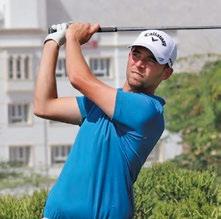

3
of 4.4 or less at the Ras Al Khaimah Open (Tower Links G.C.), the Northern Emirates Open (Al Hamra G.C.) and the Al Ain Classic. Those events were among the six postponed. Here’s hoping the EDGA players are among those on the tee when the MENA Tour resumes. 5 smooth resumption A doff of our cap to the administrators worldwide trying to piece professional golf back together again in these extremely uncertain times. The cryptic scheduling puzzle is no less challenging for the MENA Tour who had sourced a series of European, Asian, Challenge and Alps Tour starts for
1) 2020 journey to jordan leader david langley. 2) bailey gill teed it up on the european tour courtesy of the mena tour. 3) arjun gupta has ground to make up on amateur oom leader shergo al kurdi. 4) george groves, the wr4gd no. 1, in action at the dp world tour championship, where he lifted the edga dubai finale trophy last november; 5) englishman david hague is second behind langley in the oom and eyeing the arena championship at ayla golf club, the mena tour’s destination partner in aqaba, jordan.
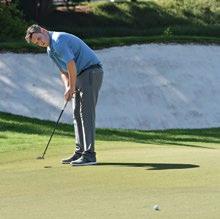
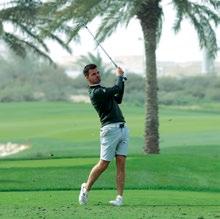
its best 2020 performers, invites on tours now in a state of flux themselves. Those are complications for another day though. For now, the great news is a determination to get the MENA Tour by Arena back on its feet as quickly and as safely as possible and heading towards the season-ending $100,000 Arena Championship at Ayla Golf Club, the circuit’s Aqaba destination partner. “We are in touch with the members and updating them on a regular basis. The logistics are being tied up right now. We are looking at the window of October-November. The Tour is talking to the venue partners and will release the dates as soon as possible,” the tour said in a statement. A resumption, in any shape or form, will be a grand statement of intent.










